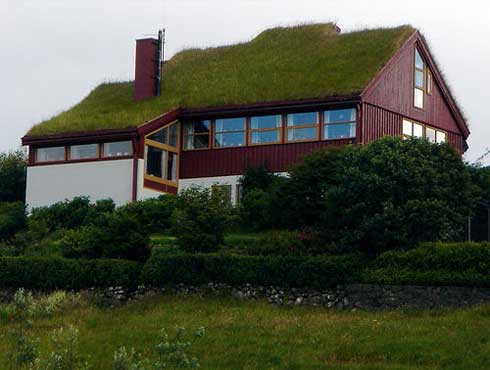It is a commonly accepted fact that roofing is an important component of our house that can act as a reliable barrier against the elements and weather. However, green roofing has provided with an entirely new alternative in this field. With green roofing, we could get a roof that’s more than just a shelter. It should provide a safe habitat for the occupants and provide protection for our belongings inside the house. Green roofing system could also be used to collect water for our garden and other purpose. This should allow us to use less water and green roofing would contribute to our environment.
Some green roofs are the vegetated type and it is often called the sky garden or ecoroof. This is a fairly modern implementation of roofing and can be implemented as an advanced technique. Such a roofing system should fit well with the contemporary aim of the government to develop eco-friendly lifestyle among the population and the establishment of sustainable energy centers inside urban centers. Green roofing with extensive types is considered as a non-recreational model and it should host a sustainable environment for plants, grants, herbs and any kind of natural succulents. For far more costly affair, some homeowners choose the intensive type. To construct this, we need a higher level of knowledge, commitment and planning. Intensive green roofing could be used for recreational purposes and it should be mixed with an array of living organisms and plants. The roof surface could be covered with a reasonably thick soil layer for plants or even trees to grow.

Biodiverse roofing should match well with any eco-friendly principle. In many cases, homeowners treat the roofing as a type of garden. They boast any of the benefit we could get from garden. But the difference is that, green roofing is aimed to fulfil any standard in biodiversity objectives and projects. As an example, our sky garden could become a habitat of migrating birds, where they could take shelters temporary before they fly again to their destinations. The type of soil we used in green roofing should be ideal for our overall purposes. It should be fertile enough to support a significant proportion of plant.
With its soil layer, green roofing could insulate our house in the summer and winter. Plants will directly absorb sun energy and very little is transferred to the interior through the soil and concrete layer. During the winter, the soil layer will become a barrier to keep the interior insulated and heat will unlikely to escape.
In contemporary suburbia areas, green roofing should become increasingly popular, despite all the cost implications that we expect. In some areas, government provide incentives for houses and buildings that correspond to its environmental initiatives. Overall, green roofing will reduce costs greatly, especially when more and more people are encouraged to create such a system in their houses. With green roofing, we could gradually lessen the progression of global warming, because the system will significantly reduce our carbon footprint.























